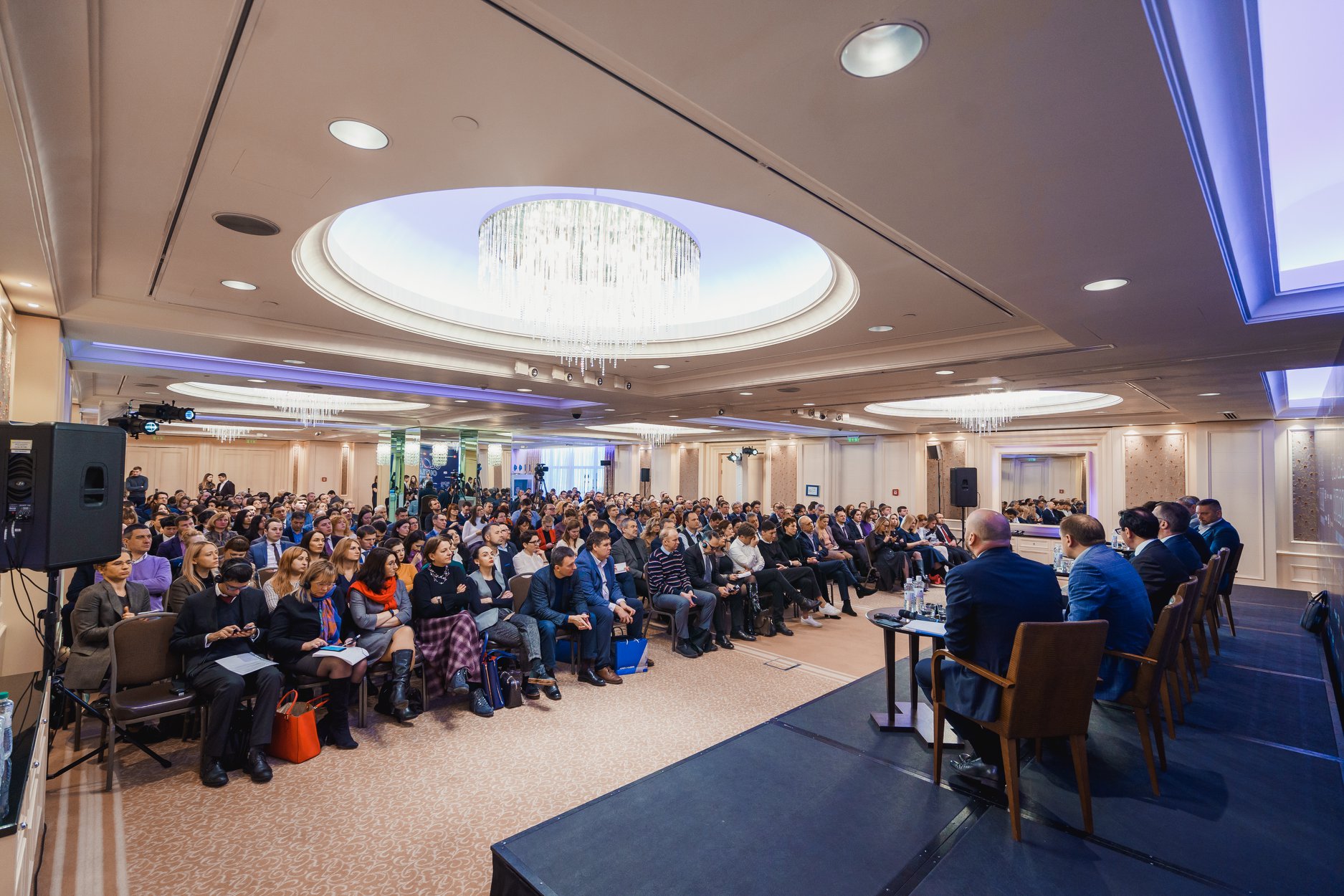With high expectations for another year of economic progress in Ukraine, the European Business Association held its annual meeting in Kyiv on Feb. 6.
Experts discussed economic benchmarks Ukraine can achieve by the end of 2020, placing a particular emphasis on the economic impact of lifting the moratorium on land sales in Ukraine, which Ukraine’s parliament considers a top priority.
Experts also gave their prognosis on key macroeconomic trends including inflation, currency rate and the growth of the gross domestic product.
Land market forecast
Ukraine’s new government has set an ambitious goal of 40% economic growth in the next five years. But according to experts, the long-awaited opening of Ukraine’s land market won’t contribute to growth before 2022.
“Within the first two years, it’s going to be some kind of stabilization,” said Alex Lissitsa, CEO of IMC, one of Ukraine’s top 10 agricultural companies.
Few landowners are expected to sell their property to agricultural companies immediately after the opening of the land market. As a result, Lissita says it will take several years for companies to benefit from the market with larger, streamlined land plots.
Additionally, as agriculture industry players are unsure about the impact of the land market reform, they are largely opting save money and declining to invest in new equipment as they wait for the situation to stabilize.
Applications to purchase new agricultural machines in 2020 have already dropped by 20-30%. For combines the figure is 40%.
“Investments in technology will be suspended in the next two years. Everybody started to save all their money, as it’s likely that the banks won’t give big loans (needed to buy land),” said Lissitsa, whose company controls about 30,000 hectares of Ukrainian land.
Currently, the price to rent one hectare for IMC is around $200. But as the moratorium is lifted, companies like IMC will have to buy land instead of renting at prices that could reach up to $2,800 per hectare.
At the same time, Tomas Fiala, CEO of the investment fund Dragon Capital, gives a more positive prognosis.
“We expect that opening of a land market will add 0.4% to economic growth this year. In the next year – 0.7%,” said Fiala.
Experts also highlighted the possible economic impact of the coronavirus outbreak, which has already killed over 600 people. China is a key agricultural training partner for Ukraine, and prices for Ukrainian agrarian products might fall by $12-15 per ton due to lower demand caused by the virus as it already happens to other Ukrainian commodities.
“It might be a very serious problem,” said Lissitsa.

Alex Lissitsa, CEO of IMC, speaks during the EBA meeting on Feb.6, 2020 about major problems agrarian companies might face after the opening of the land market in Ukraine. (European Business Association)
General economic forecast
Despite doubts about outcomes of the land reform, the general view on Ukraine’s macroeconomic situation is more positive.
According to Oleksandr Pysaruk, СЕО at Raiffeisen Bank Aval, Ukraine is experiencing its best macroeconomic situation in 20 years.
“It’s the result of an adequate macroeconomic policy made by the government and the National Bank of Ukraine,” said Pysaruk.
Fiala of Dragon Capital also believes that the inflow of investment and the consequent strengthening of the hryvnia by 17% in 2019 is a result of effective actions of Ukrainian President Volodymyr Zelensky and his new government.
“During the first half of the year, we will close several new deals worth more than $200 million,” said Fiala.
By the end of the year, the national currency is expected to grow even stronger, to Hr 24 per $1 Fiala said.
“There is no reason to expect big shocks this year, and the NBU is fully able to prevent excessive fluctuations (of the exchange rate) with its reserves,” said Pysaruk.
At the same time, investors remain cautious. If the executive board of the International Monetary Fund doesn’t approve its new $5.5 billion loan program for Ukraine in the next few months, it may lead to the weakening of the hryvnia and an outflow of foreign investment.
Despite improvements, Ukraine still lags behind its neighbors. “When compared to Central Europe… when something is set for sale there, there are 20-30 interested investors. In Ukraine – it’s three to five investors,” said Fiala.
In addition, Fiala forecasts 4% growth of gross domestic product by the end of 2020 and 3.7% growth in 2021. Inflation, meanwhile, is expected to be 5.2% and 6.1% respectively.
Plus, as the National Bank is consistently decreasing its basic interest rate (currently it’s 11%), commercial banks have started to actively lend money to businesses, which “positively influences economic growth,” Fiala said.
The new $3 billion gas transit contract between Russian gas behemoth Gazprom and Ukrainian Naftogaz was also seen as a positive step that will help cover Ukraine’s budget deficit, according to Oleg Nikonorov, CEO at Regional Gas Company.
“If this hadn’t happened, Ukraine would have had to allocate an additional $1 billion from the budget to maintain the country’s gas transport system.”

People attend the EBA Global Outlook event at the Hyatt Regency in Kyiv on Feb.6, 2020. (European Business Association)
